
Saturday June 6, 2020 ~ NATIONAL
Analysis by Mary Brooke, B.Sc. ~ West Shore Voice News
Much of the mental construct around hunkering-down and reopening as we live forward with COVID-19 hinges on the hope that a vaccine against the novel coronavirus will be available relatively soon. As individuals, communities and economies we can only hold our breath for so long with separation from loved ones and businesses hobbling along (if at all) on minimal customer action.
The general framework given by science and governments is that a vaccine could be developed, tested, manufactured, distributed and administered within 12 to 18 months. That’s if things go well… i.e. that the virus can be properly identified, the vaccine properly and adequately prepared, and that clinical trials on humans are fast-tracked.
Vaccines have until now taken about 10 years from start to delivery, if there is one at all. There is still no vaccine for HIV/AIDs, a virus that first appeared in the early 1980s (though its origin in Africa apparently stems back to the 1930s). There is still no vaccine for SARS, likely because all patients at the time (2002-2003) readily died from the speedy ravages of the disease and there was no further transmission. It was only forty years ago in 1980 when smallpox infection was finally eradicated (though apparently samples are still held in secure labs, based on the last-known case of infection and death in the late 1970s when the virus escaped controls in a lab in the UK).
Working on a vaccine:
There are 10 companies around the world working on a vaccine, many of which already had vaccine platforms targeting other coronaviruses such as MERS and SARS. This enabled them to rapidly prototype experimental vaccines for immunizing against the SARS-CoV-2 novel coronavirus that causes COVID-19.
These are the companies that are actively developing COVID-19 vaccines either on their own or in partnership with another drug maker: Arcturus Therapeutics, BioNTech, CSL Behring, Dynavax, GloxoSmithKline, Inovio Pharmaceuticals, Johnson & Johnson, Moderna, Novavax, Pfizer, Sanofi, and TranslateBio.
Effectiveness of a vaccine depends a lot on timing:

Of course the active COVID-19 virus keeps mutating (as discussed in a data modelling presentation by BC Provincial Health Officer Dr Bonnie Henry on June 4), so there is no guarantee that any vaccine will be 100 percent effective. Governments and elected decision makers will want to keep that sobering thought in mind as they re-open economies.
As we know from influenza vaccine and illness data, a mutating virus eludes the impact of vaccines many a year in flu season. This oftentimes leads to people not choosing to receive the vaccine.
Social needs vs science:
Given the harsh impact of COVID-19 on every aspect of living in the modern world, there is likely going to be an eager uptake of any vaccine that becomes available. But if the vaccine takes ‘too long’ (i.e. if people out of economic and mental/social need eventually burst back into ‘normal’ living before a proven vaccine is readily available), people will already be back into a ‘new normal’ and taking the risks that come along with that.
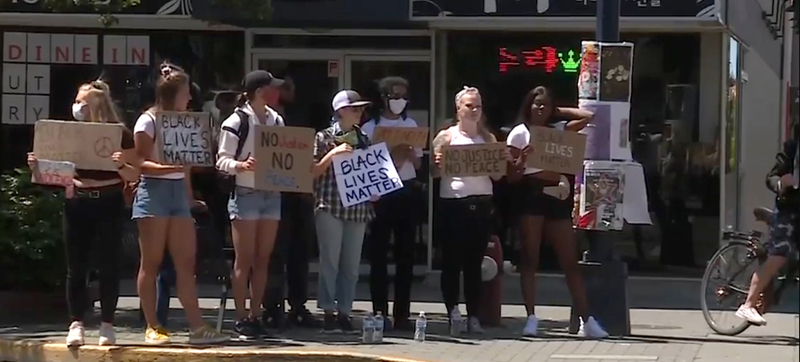
Case in point, the social ‘need’ for anti-black-racism protests and demonstrations emerged in the last 12 days, and that has seemed to almost fully override people’s concerns about the physical distancing that is required for best management of COVID-19 spread. Many protesters wore mask — evidence of knowing we’re in the middle of a pandemic, but were in most cases jam-packed in crowds.
While speaking up against systemic racism is very important, it seems that the spread of COVID-19 is equally or even more important. In a way, the anti-racism movement gained more momentum under pandemic conditions because people have a lot of pent-up frustration from being shut in. Transferring that frustration from self-isolation to the frontlines of a social protest (regardless of the protest theme itself) is probably just one of many repercussions of social and physical distancing that we will see as a result of following public health orders around containment of COVID-19.
Life goes on:
Already BC has pulled back on launching Phase 3 of their Restart BC economic recovery program. At first it was set to start June 1. That was not a firm date, but was nevertheless reasonably expected, given the success of British Columbians in ‘flattening the curve’ in for two-and-a-half long hard months, mid-March to the end of May.
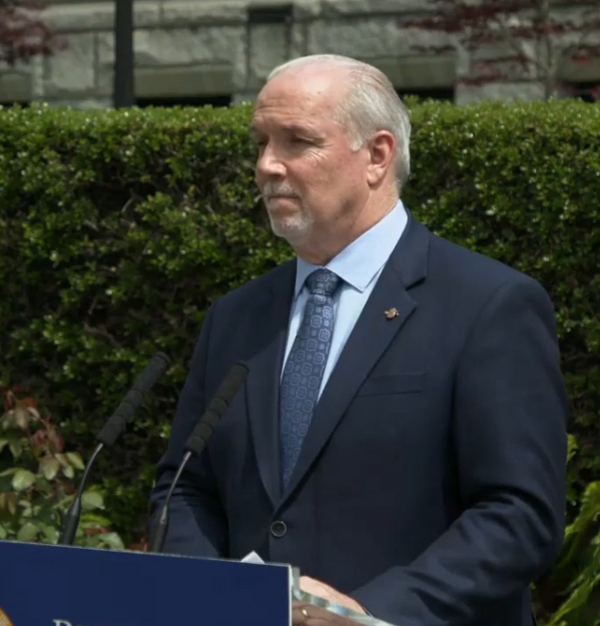
Without specifically mentioning what must have been from a public health perspective their great disappointment, the turn of events with the public mass gatherings to protest racism, this week both Premier John Horgan and Provincial Health Officer Dr Bonnie Henry quietly glossed over the fact that June 1 came and went.
No fanfare for a Phase 3, The Restart BC website has (as of June 6) not been updated since May 29, leaving the public and the media to quietly figure it out for themselves. Horgan gave it the good ol’ college try in his May 27 media session… talking about Phase 2… leaving at least two TV reporters gently prodding for a correction and getting none.
COVID-19 is king, containing us in Phase 2:
No one is arguing against the socio-political importance of the public demonstrations against racism. Ironically, the one powerful thing (i.e. standing up for human rights) that has trumped our voluntary agreement to socioeocnomic shutdown as a way to combat the virus, will bring us more spread of the virus. COVID is king, and wins over us again in this year 2020 that none of us will ever forget.
So, in BC, we are still in Phase 2 with expected adherence to physical distancing, self-isolation if one is the least bit unwell, frequent handwashing, and taking all precautions in business, schools and public places to prevent spread of the disease in whatever ways possible (including sanitization, staggering of schedules, no mass gatherings, etc.).
Now we wait and see:
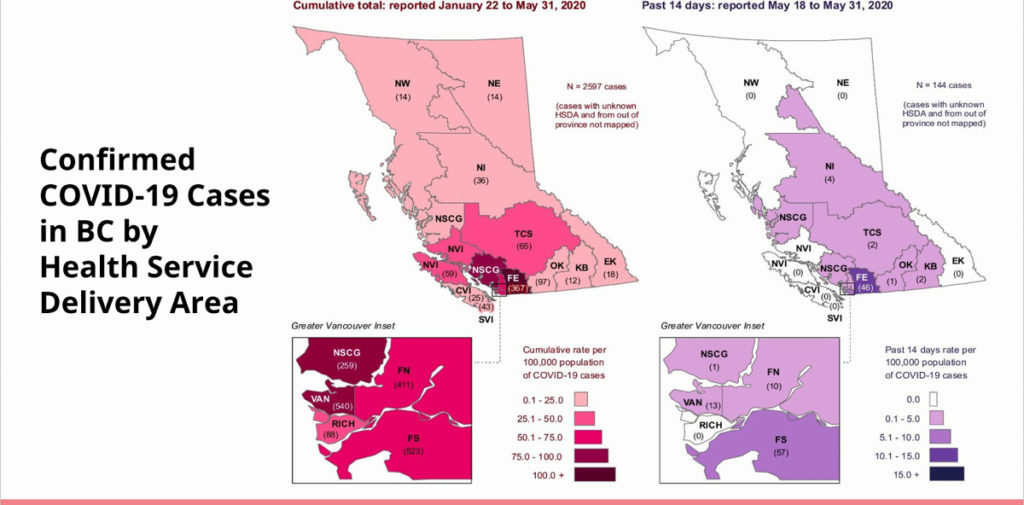
Dr Henry has done her big rollout to ‘teach’ British Columbians (as Health Minister Adrian Dix puts it) how to combat COVID-19. Now we wait to see how “our pandemic in BC” unfolds.
At present (June 5, 2020 at 4:30 pm), data from the BC Centre of Disease Control shows 2,632 cases (with 2,272 or 86.3% recovered), 21 people currently hospitalized (five of those in ICU), and 167 deaths.
Today Saturday June 6 is the first well-earned day off for Dr Henry since her first announcement in January with Health Minister Adrian Dix about the new coronavirus as a public health concern, then escalating to being a pandemic, and now we’re in an ongoing State of Emergency (presently to June 9 in BC, but likely to continue, as Horgan indicated on May 27).
Picking our battles:
As a society, we have picked our battles. First COVID, then anti-racism protests, and thereby again COVID. A second wave is almost certainly to come by October (as announced by Canada’s Chief Public Health Officer Dr. Theresa Tam this week) because physical distancing and avoiding mass gatherings has clearly now been disregarded by many.
(Footnote: it must be frustrating for businesses and sports organizations collectively losing millions of dollars by following the ‘no mass gatherings’ public health orders, to see the civil unrest that blatantly disregards that order.)
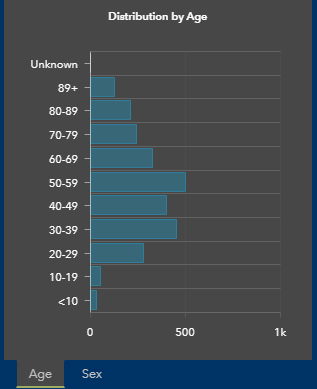
Within the COVID-19 war there has been another internal battle in terms of the emphasis by public health. Fervor for protecting seniors and elders (to which there was little social argument) has come at a cost to working-age adults and to youth.
With so much emphasis on protecting seniors, it gave youth and young adults what is turning out to be a false sense of security (739 of COVID-19 cases or 28.0% are seen in ages 20 to 39, and 85 cases or 3.2% among children and teens). This is clearly evidenced in the almost complete disregard for physical distancing during anti-racism protests in the last 12 days.
Second wave of COVID-19 quite likely by October:
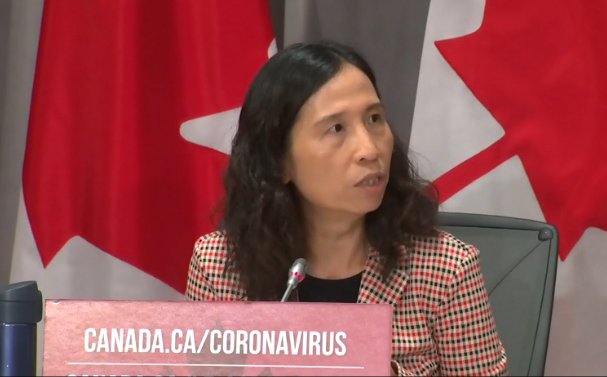
Chief Public Health Officer Dr. Theresa Tam said on June 4 in Ottawa that even though progress is being made in fighting the novel coronavirus, until an effective vaccine or treatment is available (again leaning on Canadians in a state of hope in this regard), an ongoing effort is going to be required or Canadians could see an “explosive” second spike.
National COVID-19 modelling shows that if population-based measures are loosened – allowing larger gathering sizes, permitting students to go back to school, and allowing businesses to reopen without accompanying public health measures — it “will likely cause the epidemic to rebound.” | See federal COVID-19 data modelling, which as of June 6, 2020 shows total cases at 95,057 (of which BC has 2,632 or 2.77 %) and total deaths in Canada due to COVID-19 standing at 7,773 (of which BC has had 167 or 2.14%).

The figures in the national modelling as presented by Dr Tam on Thursday showed that if the spread prevention measures are insufficient, Canada could have another peak come October. That will be within the start of the annual influenza season, helping the already insidious COVID-19 virus to masquerade within a stable of illnesses.
Public health and elected officials, unscripted:

Public health is still leading the charge, with elected leaders still with relief following step but learning the dance.
“While we start loosening some restrictions, we also have to strengthen other measures… and as people head back to work, it’s even more important that we keep a 2-metre distance from others, wash our hands, and wear a mask when physical distancing is not always possible,” Trudeau said on Thursday. | See West Shore Voice News editorial from April 19, 2020: “Politicians and Public Health: delicate dance toward a new post-COVID normal”.
Canada supports the global approach toward a vaccine:

Prime Minister Justin Trudeau says a COVID-19 vaccine must be shared by the world in order to eradicate the disease. This past week he confirmed Canada’s donation of $600 million over five years to the Global Alliance for Vaccines and Immunisation (GAVI) that the Bill & Melinda Gates Foundation started about 10 years ago.
The GAVI program works with donors such as sovereign governments, private sector foundations and corporate partners; NGOs (including the World Health Organization), advocacy groups, professional and community associations, faith-based organisations and academia; vaccine manufacturers, including those in emerging markets; research and technical health institutes; and developing country governments.
The work of the alliance has seen the immunization of 760 million children and has prevented 13 million deaths in the world’s poorest countries since 2000. The global community is now supremely fortunate to have this framework already in place, which could help lead the momentum for ensuring that a COVID-19 vaccine (that we presume is possible) will be made available around the world.

“Vaccines work, and 86 percent of the world’s children have been reached by routine immunization. And in the midst of a global pandemic, it has never been more important to build capacity to respond to disease outbreaks and work with organizations to develop and deliver vaccines,” Trudeau said this week during one of his COVID-19 live updates in Ottawa.
On June 5 Trudeau thanked UK Prime Minister Boris Johnson for pushing forward the support for GAVI at this time.
Rebuilding our own economic base:
Meanwhile, the federal government is also shifting to funding the increased production of personal protective equipment (PPE) within Canada, providing funding to companies that are pivoting from previous types of manufacturing into the realm of PPE, and quickly.
In addition to being a smart and necessary step for generating PPE more reliably close to home, it begins shedding light on one of the great downfalls of the last 30 to 40 years of globalization of the economy. Canadian businesses, in particular, have thirsted far and wide for economic opportunities (i.e. customers) in the broader base that a global population with many developing countries offers.

This in many cases has meant that we either produced too much product for our own population (as in the case of some agricultural products that rely on take-up by massive populations abroad) or far too little (as in the case of PPE, much of which has been produced in China until now).
Much like a household that is self-reliant and self-sufficient, Canada needs to be able to do a little bit of everything by itself, for itself. COVID-19 has hammered home that lesson.
COVID-19 highlights the pros and cons of globalization:
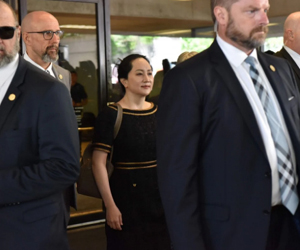
While Premier John Horgan said in his media session May 27 that he would ‘stick to his knitting’ (i.e. turn a blind but attentive eye) regarding the likely politically-generated economic impacts that could results from the recent developments in the Huawei CFO extradition case, it is no doubt high on the BC agenda (and for Canada) to keep looking for ways to become economically less reliant on China in more and better ways, as soon as possible. During COVID-19, the world is becoming entrenched within hardened national borders, yet softening or even reversing many of the things that were thought to be advancements due to globalization.
Clearly the benefits of decades of globalization include the interchange of political dialogue and sharing of national intelligence. But the boots-on-the-ground aspects of producing food, products and equipment are pulling inward within national boundaries. Canada is being creative with implementing effective ‘cracks’ in the system, such as arranging for the transportation of essential goods across the Canada/USA border, but is still caught in some tough political and economic chokeholds when it comes to the interwoven pre-COVID economic desires of dealing with China.
Silver linings of COVID continue to unfold:
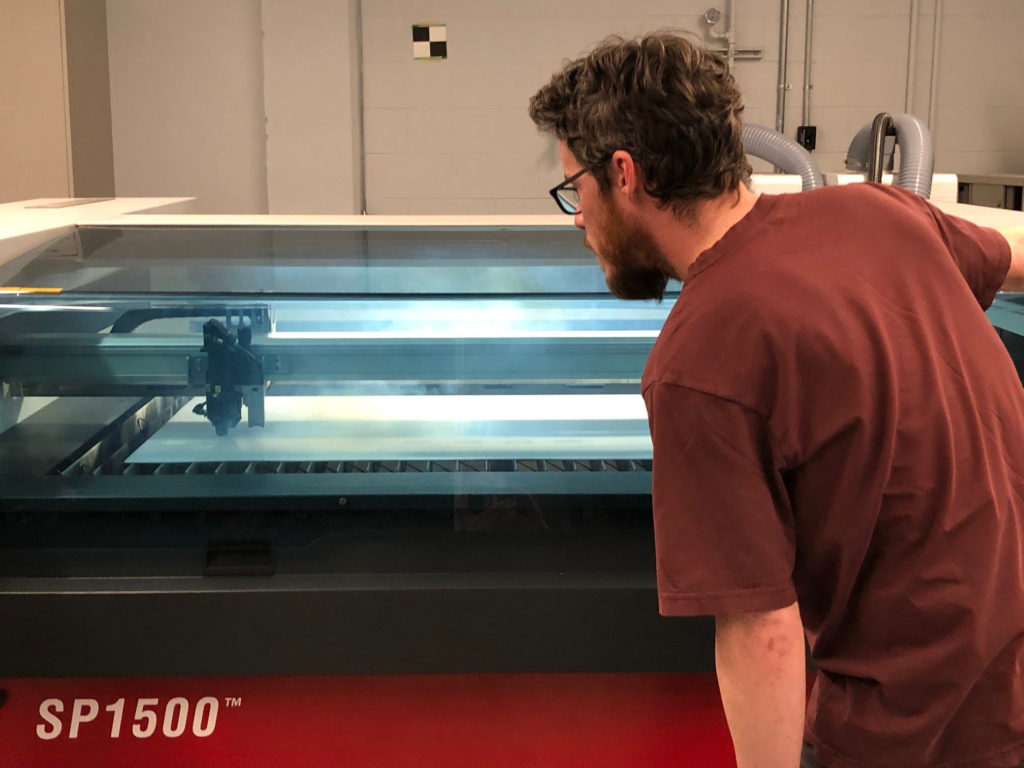
From the start of the pandemic, many people have observed some unexpected positive results of dealing with the health crisis, which has also become an economic crisis.
Many plusses so far include rejigging companies in Canada to make products here instead of importing them, and making sudden and necessary changes to the social safety net and likely retaining some of those going forward (to the benefit of low-income, disabled, seniors, gig-workers, very small businesses, and many other sectors). Even the environment has had a reprieve as fewer aircraft and cars have been spewing carbon emissions into the atmosphere. And those who are self-isolating away from physical contact are benefiting by some slowing down to ‘smell the roses’ and catch up on other aspects of their lives.
COVID-19 is teaching us to be resilient and smart, while it humbles us into doing the right thing for the benefit of the whole. This comes back to the vaccine program… it will only work to save us all if in fact everyone — rich or poor, developed nation or in remote corners of the globe — receive a vaccine collectively within a short period of time. That is more necessary now in a world where people presume it is their right to travel the globe. If we were sticking to our own backyards, the prevention of communal disease would hardly be so paramount a need.
Our learning to be global will — oddly thanks to COVID-19 — be put to good use for all, not just the economic or leisure benefit of some.
![Hon John Horgan, MLA [Langford-Juan de Fuca]](https://islandsocialtrends.ca/wp-content/uploads/2020/04/LFDJdFConstituency-WSVN-covid-banner-728x90-web.jpg)



